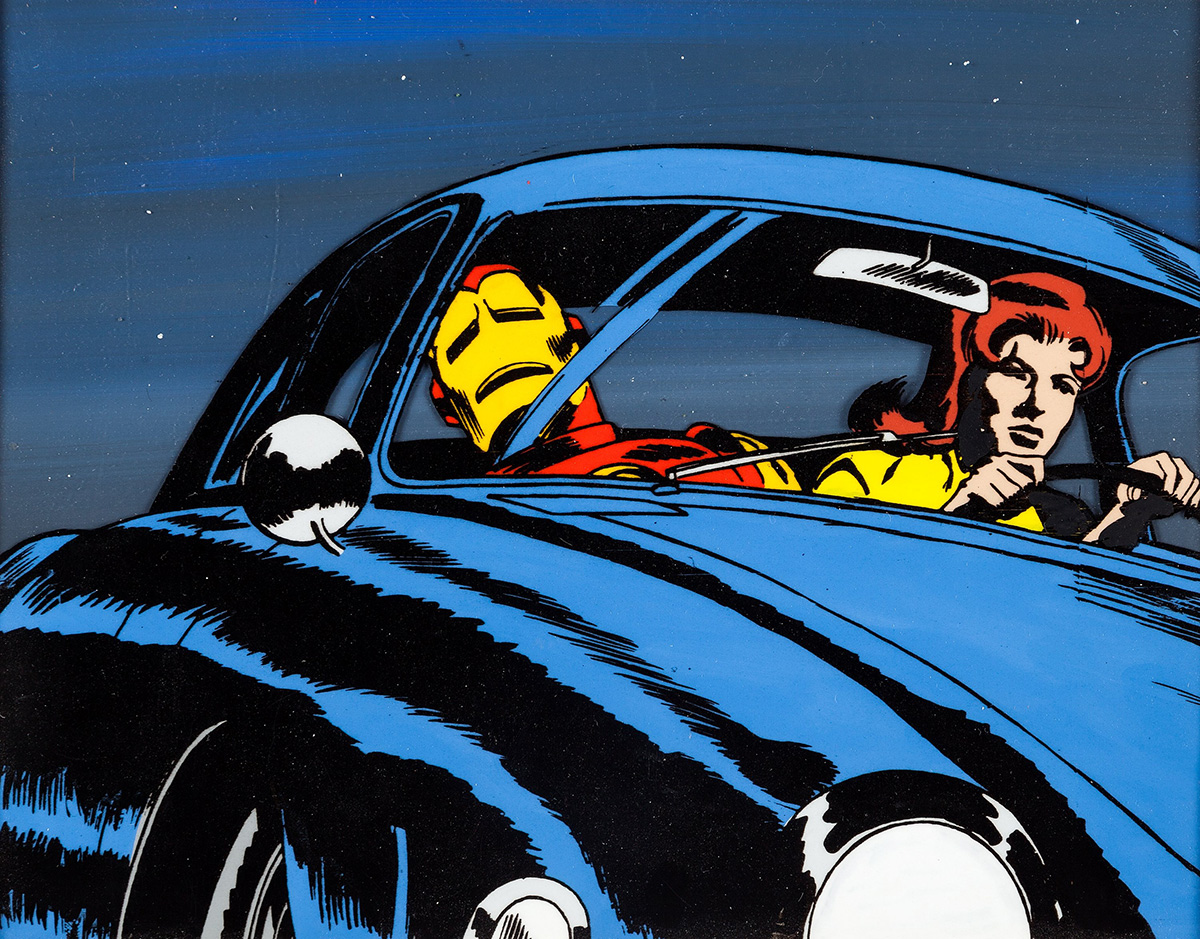
Iron Man (1966) Cartoon drawing


It’s a bit odd to think that the TV series Sherlock has been around seven years and yet has only ever aired a handful of episodes. Granted, these episodes, 12 as of today, are more like feature films than simple episodes of TV, but in an era when most TV series air in a season in what Sherlock has in four says something about the popularity and staying power of this show.

And so far Sherlock has remained one of the more popular of the BBC export series, turning Benedict Cumberbatch from an actor who appeared on mostly British TV to a legitimate superstar most recently starring in the latest Marvel hit Doctor Strange. And co-star Martin Freeman, who was the one known “face” when Sherlock originally premiered, has gone from “the guy who was in the British version of The Office” to a well-known actor recently starring in the first season of the Fargo TV series, the lead in the Hobbit trilogy of films and now, like Cumberbatch, a part of the Marvel movie universe appearing in several films.
I think the reason for all this popularity is that the tone of Sherlock is just right. It’s mostly light, but sometimes heavy. And comedy plays a large role in the show too, whether we’re laughing at things the characters say or the actions they take. However, this most recent season of Sherlock is reportedly going “darker” than previous seasons which makes me a little nervous in the direction of the show.
This time Sherlock Holmes (Cumberbatch), Dr. John Watson (Freeman), John’s wife Mary (Amanda Abbington) and their infant daughter are back on the case after the events of the third season finale seem to indicate that Holmes’ nemesis Moriarty (Adam Scott) might still have evil plans in the works even after his death. What starts as Holmes believing that the mystery he’s trying to solve is one Moriarty set into motion to harass Holmes post-death turns instead into something from Mary’s dark past that comes to haunt the trio.
And the first episode of the fourth season does go dark, much darker than before. While I thought the episode was still good, I’m not sure how this bodes on the longevity of the show. On the one hand I can’t see Sherlock lasting much longer, especially with Cumberbatch and Freeman being in such demand elsewhere making the gap between seasons of the series so long — other than last year’s Christmas special the last episode of the series aired nearly three years ago. So it would make sense for series creators Mark Gatiss and Steven Moffat to shake things up a bit if they are really getting towards the end, to try out some new kinds of stories that weren’t possible before and take the show in a different direction. Still, even if the series has been on the air for those seven years there’s been so little story covered in that time that going dark now feels really odd. Like, even if Gatiss and Moffat had simply done another Sherlock series in tone with what’s come before I don’t think anyone would be complaining that they’re trudging on story ground covered in previous seasons of the show — they could spend years more exploring that version of Sherlock and never do the same story twice.
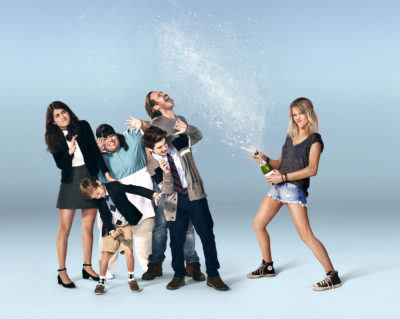 The first two episodes of the new Fox comedy The Mick premiered last week. The show, about Mackenzie Murphy (Kaitlin Olson) who’s forced to raise her spoiled niece and nephews after her sister and husband flees the country ahead of a federal indictment is all right, if I get the feeling this has all been done before. The Mick is equal parts Arrested Development — a family member is forced to swoop in help out their extremely wealthy family after the feds find that wealth was gotten by less than legal means — by way of the raunchy over the top humor of It’s Always Sunny in Philadelphia. It doesn’t help matters that the Mackenzie character here Olson plays is essentially the same character she plays on It’s Always Sunny in Philadelphia. Heck, The Mick might actually be interesting if it were a spin-off of that show since there doesn’t seem to be a lot of originality going on in here.
The first two episodes of the new Fox comedy The Mick premiered last week. The show, about Mackenzie Murphy (Kaitlin Olson) who’s forced to raise her spoiled niece and nephews after her sister and husband flees the country ahead of a federal indictment is all right, if I get the feeling this has all been done before. The Mick is equal parts Arrested Development — a family member is forced to swoop in help out their extremely wealthy family after the feds find that wealth was gotten by less than legal means — by way of the raunchy over the top humor of It’s Always Sunny in Philadelphia. It doesn’t help matters that the Mackenzie character here Olson plays is essentially the same character she plays on It’s Always Sunny in Philadelphia. Heck, The Mick might actually be interesting if it were a spin-off of that show since there doesn’t seem to be a lot of originality going on in here.
I think what hurts The Mick the most is that there’s absolutely no characters in it the audience can identify with. It’s okay if a few or even most of the characters in a show are unlikable, but there’s no one on The Mick from Makenzie who’s a self-centered drunk, to the sister who abandons her family or even the niece or nephews who are the stereotypical spoiled rich kids you hope will fail but realize will probably be running the world someday to root for, which makes watching The Mick one long drag.
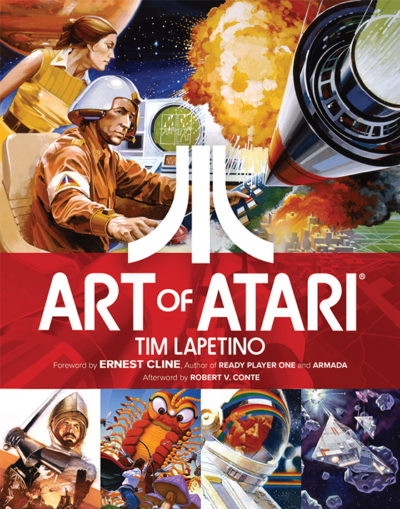 I don’t really consider myself as having grown up with the Atari video game system. I played the Atari when and had fun doing so, but to me the Atari seemed like the system of the generation before mine. Still, one thing that I always admired about Atari were the covers for their video games. When the Atari was new the graphics for video games were extremely primitive. Instead of having recognizable avatars, even top of the line games would have things like red squares representing people and triangles spaceships. But the art created for the game cartridges was something else entirely. With the covers we get these beautiful traditionally hand illustrated paintings of what we’d imagine was going on in the game, and not what was actually happening on screen. And the new Art of Atari book collects lots and lots of these original paintings.
I don’t really consider myself as having grown up with the Atari video game system. I played the Atari when and had fun doing so, but to me the Atari seemed like the system of the generation before mine. Still, one thing that I always admired about Atari were the covers for their video games. When the Atari was new the graphics for video games were extremely primitive. Instead of having recognizable avatars, even top of the line games would have things like red squares representing people and triangles spaceships. But the art created for the game cartridges was something else entirely. With the covers we get these beautiful traditionally hand illustrated paintings of what we’d imagine was going on in the game, and not what was actually happening on screen. And the new Art of Atari book collects lots and lots of these original paintings.
I especially like the covers done by artist Steve Hendricks who helped define a house style for how the Atari video game cartridges should look in his, what’s now a retro, style that’s absolutely gorgeous.
Nowadays covers to video game are all illustrated in this hyper-realistic 3D style that’s supposed to emulate the actual video game content within. Which is a shame since while that’s nice, I’d argue that the approach by the artists of the Atari age was better.
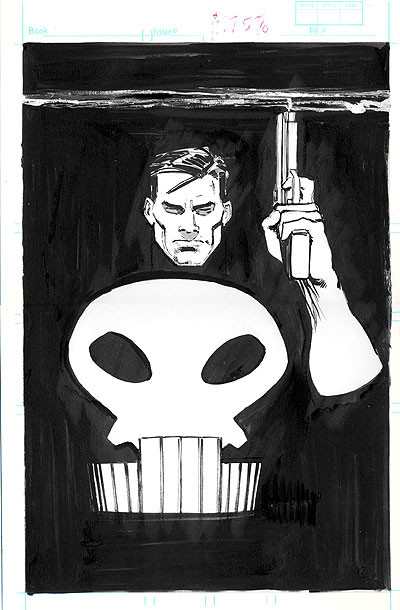 My favorite comic book character who returned after a long absence: The Punisher.
My favorite comic book character who returned after a long absence: The Punisher.Okay, I lied — the Punisher’s been around in one form or another since he debuted in the early 1970s. But over the last decade he was a mostly forgotten character writers would use to try out their ideas on before moving onto something else. However, in 2016 the Punisher returned with a vengeance (haha) after having appeared in the latest season of Daredevil and is now being spun-off into his own Netflix series due out laster this year.
Best of all most of the Punisher’s early comic book stories are now available in collected forms with these massive editions of both Punisher and Punisher War Journal out and available for purchase.
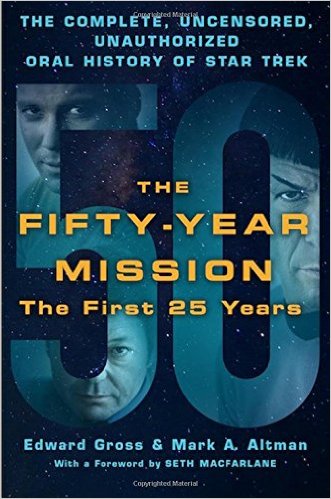 I’d always assumed that the making of the Star Trek TV series was mostly easy. Or easier than it seems like it is with other series, especially since the show was in production for 18 years from 1987 to 2005. But I was surprised to learn how wrong I was after having read the two volume The Fifty-Year Mission… that chronicles all things Star Trek from before the first series debuted in 1966 to the last Enterprise and all the movies as well. I’d known how dysfunctional the original Star Trek set was in the 1960s, but I had no idea how dysfunctional all the sets were. It seems like whenever there’s even the hint of success for someone, someone else already in power’s going to get jealous, and when that happens it means trouble for everyone else down the line.
I’d always assumed that the making of the Star Trek TV series was mostly easy. Or easier than it seems like it is with other series, especially since the show was in production for 18 years from 1987 to 2005. But I was surprised to learn how wrong I was after having read the two volume The Fifty-Year Mission… that chronicles all things Star Trek from before the first series debuted in 1966 to the last Enterprise and all the movies as well. I’d known how dysfunctional the original Star Trek set was in the 1960s, but I had no idea how dysfunctional all the sets were. It seems like whenever there’s even the hint of success for someone, someone else already in power’s going to get jealous, and when that happens it means trouble for everyone else down the line.
After having read the books, I get the feeling that whenever anything Star Trek related worked it was usually because of just a few people, but when Star Trek failed it was because of the decisions of committees.
I’m not a big fan of actor Ryan Reynolds, but after 2016 I have to admit two things: 1) He was totally right in spending a decade doggedly trying to get his movie Deadpool to the big screen and 2), Deadpool is the character he was born to play. And now because of the success of Deadpool we have this alt-superhero movie that really isn’t like any other superhero movie before. And because it was so successful means that we now have the opportunity to have other superhero films that are new and different then the standard superhero fare that we’re treated to a few times each year.